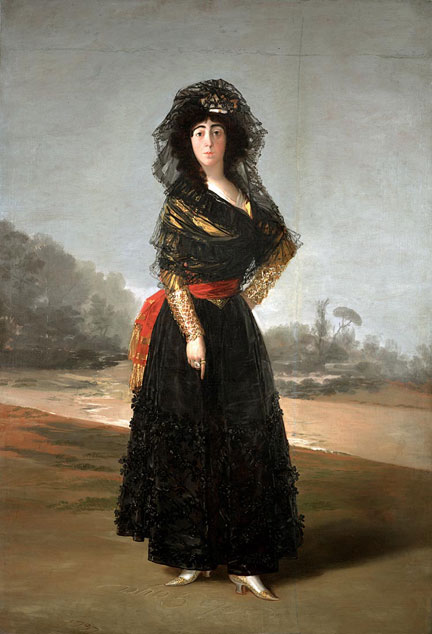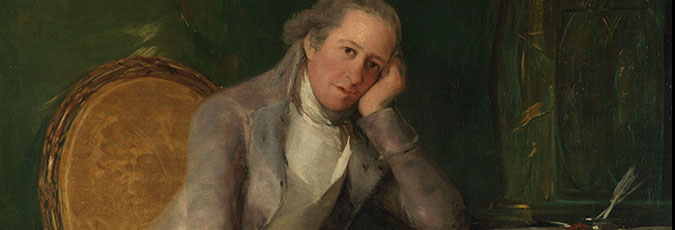Official court painter
‘The Duchess of Alba’
The 13th Duchess of Alba was celebrated by all for her beauty and charisma. Opinions as to what she was like were divided; some thought her sensitive and generous to friends and people of lower rank, while others found her childish, wilful, and with little common sense. Having inherited her grandfather’s titles and estates and a huge fortune, she was spoilt and temperamental, but her wealth and beauty were sources of fascination, especially her changing hairstyles, jewels, and impulsive behaviour. A contemporary recounted how ‘Alba has not a single hair on her head that does not awaken desire.’
How Goya met the Duchess we do not know, but she is first mentioned in a letter to his friend Martín Zapater in 1794 when he explains his surprise and delight that she had paid him an unexpected visit: ‘The Alba … barged into my studio yesterday to have her face painted, and went off like that. I definitely prefer this to painting on canvas.’ Goya painted her portrait twice, the second of which he painted in 1797 while staying with her in Sanlúcar de Barrameda, Andalucia.
Goya shows the Duchess standing in a landscape evocative of the sandy river views one sees today in the National Park of Doñana, in a position of authority emphasised by her left arm resting on her hip and the right hand pointing imperiously to the artist’s inscription on the sand: ‘Solo Goya’ (Only Goya). Although these words have in the past been interpreted as proof of an amorous relationship, they are today believed to be a proud reference to himself, as the Duchess’s personal painter and as homage to his muse and patron.

© Courtesy of The Hispanic Society of America, New York

